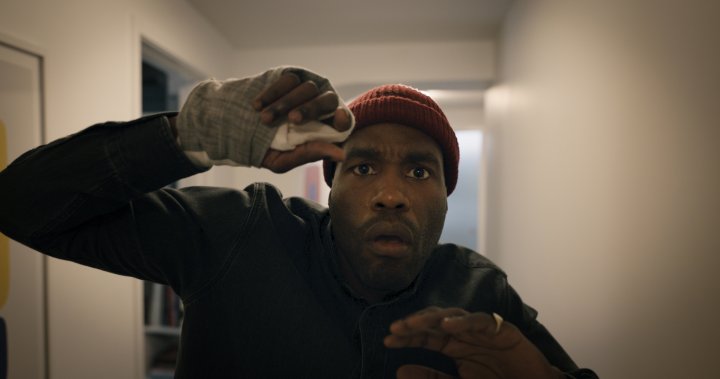The best horror movies leave a long, lingering feeling of dread, one that can stretch over days. Director Nia DaCosta, along with co-screenwriter Jordan Peele — who, of course, also brought us the genre-bending Get Out and Us — mostly succeed in achieving that foreboding with Candyman, a modern take on the 1992 original.
From the start of the movie, which follows blossoming artist Anthony McCoy (Yahya Abdul-Mateen II) and his girlfriend, art curator/director Brianna (Teyonah Parris), the creepiness pervades every square inch of the story. It feels as if there’s a shadow looming in the darkness, or someone following you, from the first tones of the film’s score.
McCoy becomes obsessed with the urban legend of Candyman, a horrific tale of lynching and murder. Years ago, so the legend goes, a Black man was lynched by a group of white people after he and a white woman fell in love. He is chased and beaten to a pulp, his hand is cut off and replaced by a hook, and the lynchers cover his body with honey so bees attack him. He eventually dies, but can be brought “back to life” by saying “Candyman” five times into a mirror. When he shows up, he kills you.
Under DaCosta and Peele’s watchful eyes, Candyman takes on a resonance about Black history and the centuries of sorrow and pain, of persecution and injustice. It starts to infiltrate McCoy’s artwork and his very being.
Is it a hard watch?
It is unsettling, there’s no denying that. There are some scenes that are graphic, and others are downright disgusting. Thankfully the movie isn’t a back-to-back-to-back slaughterfest. It’s far more thoughtful than that, even though the creepy, oppressive tone radiates throughout. The far-too-ghastly scene — the lynching — is presented instead via puppets, which are both haunting and beautiful. Whoever directed/designed/scripted the puppetry deserves some sort of award. It’s mesmerizing. (Fun fact: Peele majored in puppetry in college.)
Does it work on a deeper level, like ‘Get Out’ and ‘Us’?
I’m loath to compare all of these films as one entity, but yes, like its predecessors it has similar components. Candyman is powerful, and without spoiling, has much to say about society and its treatment of Black people. As with the other movies, towards the end there is a sharp turn (or hook, in this case), one you most likely wouldn’t expect at the start. There is ample humour sprinkled into the script (“Do you need a hand?”), and like Us, the movie gets messy at around the 3/4-mark, but mostly recovers.
The movie’s centring in real-life Chicago housing project community Cabrini-Green is stark and effective, especially when on display in dizzying cinematography. While the Candyman legend may not be real, the plight of thousands of Black Americans, continuing throughout the decades of history, very much is.
How is the acting?
Abdul-Mateen and Parris (who you might recognize from Watchmen and WandaVision, respectively) are outstanding and magnetic onscreen. McCoy’s evolution throughout the film is riveting to watch and he’s wholly convincing in the role. Even the side characters are rich; while some of them aren’t around very long, they’re all pertinent to the story. (Special shout-out to Nathan Stewart-Jarrett, who plays Brianna’s brother, for the line “Candyman isn’t real, b***h!”)
Truly, it’s one of the best aspects of DaCosta’s film, and Peele’s earlier work: every character feels fleshed out, no scene feels extraneous. It’s tight and focused, leading to a sensible 1.5-hour runtime, a rarity nowadays.
So what’s the bottom line?
Both engrossing and poignant, Candyman is an exemplary modern horror. Its haunting, visceral tone sticks with you, and when relatively innocuous things like mirrors and small candies are turned into foreboding objects, you know you’ve done your job. An intelligent film that you’ll be thinking about for days afterwards.
—
‘Candyman’ opens in theatres across Canada on Aug. 27. Please check your local listings for details.
© 2021 Global News, a division of Corus Entertainment Inc.



